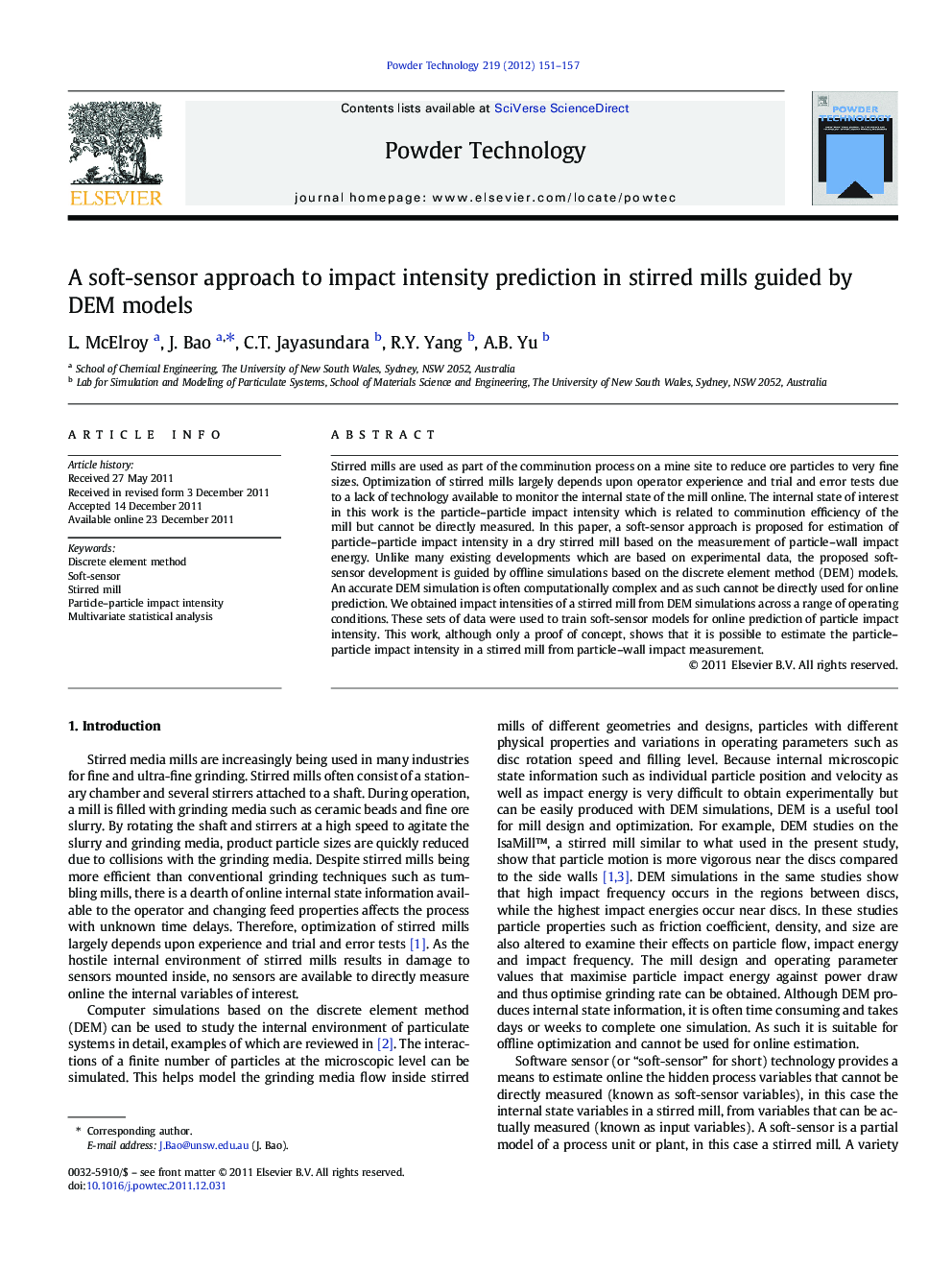| Article ID | Journal | Published Year | Pages | File Type |
|---|---|---|---|---|
| 237398 | Powder Technology | 2012 | 7 Pages |
Stirred mills are used as part of the comminution process on a mine site to reduce ore particles to very fine sizes. Optimization of stirred mills largely depends upon operator experience and trial and error tests due to a lack of technology available to monitor the internal state of the mill online. The internal state of interest in this work is the particle–particle impact intensity which is related to comminution efficiency of the mill but cannot be directly measured. In this paper, a soft-sensor approach is proposed for estimation of particle–particle impact intensity in a dry stirred mill based on the measurement of particle–wall impact energy. Unlike many existing developments which are based on experimental data, the proposed soft-sensor development is guided by offline simulations based on the discrete element method (DEM) models. An accurate DEM simulation is often computationally complex and as such cannot be directly used for online prediction. We obtained impact intensities of a stirred mill from DEM simulations across a range of operating conditions. These sets of data were used to train soft-sensor models for online prediction of particle impact intensity. This work, although only a proof of concept, shows that it is possible to estimate the particle–particle impact intensity in a stirred mill from particle–wall impact measurement.
Graphical abstractStirred mills are used as part of the comminution process on a mine site to reduce ore particle size. A soft-sensor approach is proposed for estimation of particle–particle impact intensity in a dry stirred mill (which cannot be directly measured) based on the measurement of particle–wall impact energy. The proposed soft-sensor development is guided by offline simulations based on the discrete element method (DEM) models.Figure optionsDownload full-size imageDownload as PowerPoint slideHighlights► A soft-sensor approach to estimation of the particle–particle impact intensity in a dry stirred mill. ► This approach combines DEM simulations with multivariate modeling. ► Features are extracted from measurements of particle–wall (p-w) impact energy and principal component regression (PCR). ► This approach can be potentially implemented online. ► Issues in potential implementation of the proposed soft-sensor are discussed.
